From there to here: The ABCs of successful school integration
Students from an immigrant background now represent a majority of the pupils in French Montreal schools. In Quebec, diversity management policies based on the model of interculturalism aim for the success of all in a pluralist, democratic and francophone Quebec.
However, when it comes time to make a career choice, several factors must be taken into consideration.
VIDEO (in French) : The Cabinet Conseil Santé Carrière created the video conference From there to here: the ABCs of successful school integration presented by Sandra Chéry, a guidance counsellor and teacher in socio-professional integration (ISP) at the Centre de services scolaire de Montréal as part of Quebec Orientation Week 2019. The goal is to support immigrant parents and their children in their integration while allowing them to reflect on their transitional difficulties and the means to a better recovery.
Quebec’s education system is managed by the Government of Quebec through the Ministry of Education and Higher Education (MEES). The education network is comprised of public and private institutions. The choice of school is up to the parents and the young person and is made according to the needs of each family.
Through the Quebec Education Program, the MEES determines the academic content taught and the learning that must be assessed in all Quebec schools at the preschool, elementary and secondary levels.
Each school has its own particularities because it develops the educational project determining its orientation.
As defined in the Quebec Education Act, the mission of Quebec schools has three focal points: instruct, socialize and qualify.
- Instruct: to enable students to acquire the knowledge, skills and behaviours they need to understand the world around them, find their place in it and continue as life-long learners.
- Socialize: to learn to live together in respect and tolerance. The school thus teaches the norms that govern society and the fundamental values on which the community is based.
- Qualify, to obtain certification that will promote their professional integration after their studies. The school must offer differentiated educational paths that consider the student’s fields of interest and abilities.
In accordance with the Charter of the French language, education is given in French in preschool education and in elementary and secondary schools. Students may be admitted to an English-speaking school if they meet the eligibility requirements prescribed by the Charter. College and university students can choose to attend a French-speaking or English-speaking establishment.
School boards (English sector) and school service centres (French sector) manage public schools in the territory assigned to them. Their role is to organize educational services, manage resources granted to schools and represent them.
In Quebec, there is also a private sector for preschool, elementary and general and vocational studies in secondary education. The private sector has approximately 125,000 students in nearly 270 establishments.
- Visit the website of the Fédération des établissements d’enseignement privés which is the service centre for its Quebec member schools.
According to the Quebec Education Act, there are four types of educational services in schools:
- Preschool (kindergarten) education services.
- Learning services (elementary and secondary school subjects).
- Special services (welcoming classes and support for learning French; home or hospital education (for sick children).
- Complementary services.
The school board or school service centre establishes four complementary educational service programs:
- Support: provide students with favorable learning conditions.
- School life: contribute to the development of student autonomy and sense of responsibility, of his moral and spiritual dimension, of his interpersonal and community relationships as well as his sense of belonging to the school.
- Student assistance: support students in their academic development and in their educational and professional guidance, as well as in finding solutions to the challenges they encounter.
- Promotion and prevention: provide students with an environment conducive to the development of healthy lifestyles and skills that positively influence their health and well-being.
Schools implement these complementary programs, which for students can take many forms.
For example:
- Educational and vocational guidance.
- Prevention and treatment of bullying and violence.
- Spiritual animation and community involvement.
- Actions to promote healthy eating and a physically active lifestyle.
- Sex education.

